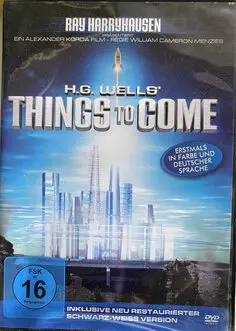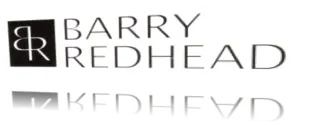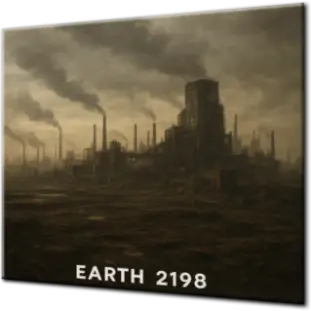Science Fiction Movie 1936
SF-Movies
Review: Things to Come (1936)
The science fiction classic Things to Come, based on H. G. Wells' novel The Shape of Things to Come, takes viewers on an epic journey through 100 years of a dystopian-utopian vision of the future. Produced by Alexander Korda and directed by William Cameron Menzies, the film impresses not only with its groundbreaking aesthetics and futuristic sets but also with the visionary strength of its narrative. The story begins in 1940 with the outbreak of a catastrophic world war and unfolds in three acts: the collapse of civilization, the resurgence through a technocratic world order, and the conflict between progress and human scepticism. The film is particularly notable for its prophetic power, foreseeing themes such as aerial warfare, pandemics, technological mass media, and even e-learning.
The visual representation of the city of Everytown and the technological utopia of "Wings Over the World" was revolutionary for its time. The accompanying soundtrack by Arthur Bliss enhances this visionary atmosphere with an epic musical score, specifically composed for the film. However, Things to Come is not without controversy. While it idealizes faith in progress and the supremacy of science, it also raises critical questions about the social and ethical implications of technocratic rule. Some critics see dangerous fascist undertones in its portrayal of a rational elite state. At the same time, the film remains a plea for peace and the triumph of technology and reason over human destructiveness.
With its captivating visuals, ambitious narrative, and intellectual depth, Things to Come is a milestone in the history of science fiction. For fans of the genre and lovers of cinematic visions of the future, it remains a must-see, inspiring thought to this day.
Final Thoughts:
Personally, I admire this visionary classic for its clear message advocating progress and reason, a film far ahead of its time. It is both fascinating and controversial, delivering a technically impressive adaptation of H. G. Wells' novel for its era—especially considering it was produced in 1936. One of its producers was Ray Harryhausen, primarily known as a stop-motion effects specialist. His other notable works include The 7th Voyage of Sinbad, Clash of the Titans, The Valley of Gwangi, and more.
Interestingly, a student of Harryhausen, Willis O'Brien, was responsible for one of the most iconic stop-motion films: King Kong (1933). King Kong was also the first film to feature dialogue scenes underscored with music, a technique pioneered by Max Steiner, now regarded as the father of film music. The film and its effects are worth seeing, and the practical effects evoke a nostalgic charm in an age dominated by computer-generated imagery.



